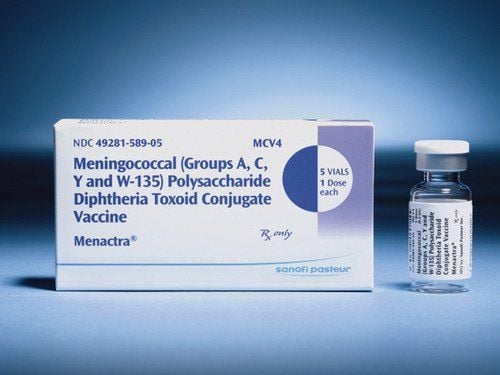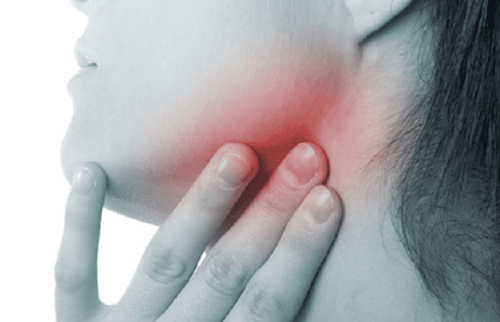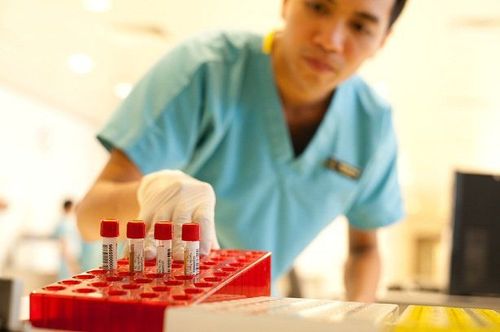This is an automatically translated article.
The article is professionally consulted by Master, Doctor Vu Quoc Anh - Pediatrician - Department of Pediatrics - Neonatology - Vinmec Danang International General Hospital. The doctor has nearly 10 years of experience as a resident and treating physician.Mumps is a disease that most people get at least once in their life, if not vaccinated. Mumps is common in children, easy to treat, but can cause complications and spread if parents treat it late.
1. Mumps and its transmission in children
Mumps is an acute infectious disease caused by the mumps virus (paramyxovirus group). The disease is characterized by painful swelling of the salivary glands, and can also cause gonadal inflammation, pancreatitis, meningitis, and damage to some other organs.Mumps can be transmitted easily through the respiratory tract when the droplets containing the virus in the breath of an infected person are transmitted to healthy people. After entering the body, the mumps virus attaches to the mucous membranes of the nose and mouth, then moves to the internal organs through the bloodstream and causes disease.
Therefore, the mumps virus present in the salivary glands is very contagious in the community. If children are not vaccinated against mumps, they can easily get the disease if they catch the virus from the nose or saliva of an infected person.
Mumps is common in children 3 years of age and older, when they start kindergarten; in which the most common are the ages 5-9 and young adults. Mumps is more common in men than in women.
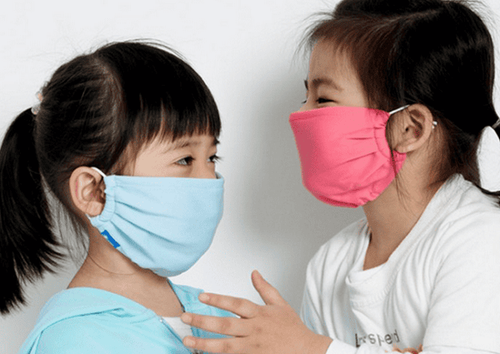
2. Symptoms of mumps in children
Children with mumps will have the following typical symptoms:Inflammation of the parotid salivary glands This manifestation is most common in children with mumps. Children now feel pain in the area around the outer ear canal, then spread around. After 1-2 days, the parotid gland will gradually swell, spreading to the area in front of the ear, down to the bottom of the jaw, losing the groove under the jaw.
The swollen area due to mumps is not hot and red. Children with mumps often have swelling on both sides of the parotid gland, which moves from side to side over a few hours to a few days.
Inflammation of the parotid salivary glands in children accompanied by systemic symptoms such as headache, fever, fatigue, joint pain, poor sleep. In some cases, the disease has rarer symptoms, which is an enlarged submandibular gland causing swelling in front of the sternum and difficulty breathing, speaking, and swallowing.
After swelling for about 1 week, the parotid gland reduces swelling, becomes small and less painful, other symptoms also gradually decrease.
Orchitis Children at puberty are susceptible to orchitis when infected with mumps, symptoms usually appear 1-2 weeks after the child has swelling of the parotid gland.
This symptom sometimes occurs alone without parotid gland inflammation but also accompanied by signs of high fever, sometimes chills, headache, vomiting.
Initially, the patient feels pain in the testicle, then the testicle swells 3-4 times larger than normal, the scrotal skin is red, painful, sometimes the epididymis is swollen. Usually patients only have painful swelling in one testicle, rarely bilateral swelling.
The disease progressed about 4-5 days, the patient had no fever but the testicle swelling lasted longer, no pus. After about 2 weeks, the testicle swelling will stop, but it will take 2 months to evaluate whether the testicle has atrophy complications or not.
Meningitis The mumps virus causes encephalitis in about 1 - 10% of cases of mumps; in young children is higher. This symptom may occur alone or in association with parotid gland inflammation 3 to 10 days. Patients with meningitis caused by mumps have high fever, headache, confusion, vomiting, convulsions, stiff neck.
Acute pancreatitis Acute pancreatitis occurs in about 3-7% of patients with mumps, more common in adults, mostly in latent form, detected only through laboratory tests.
Acute pancreatitis occurs in the second week (days 4 - 10) after the parotid gland inflammation has resolved. Some symptoms of acute pancreatitis may be encountered such as returning fever, epigastric pain, vomiting, abdominal bloating, loose stools, loss of appetite...
Besides the typical symptoms above, children with mumps may experience rarer symptoms such as: lacrimal gland inflammation, myocarditis, polyarthritis, subacute thyroiditis, interstitial pneumonia, uveitis...
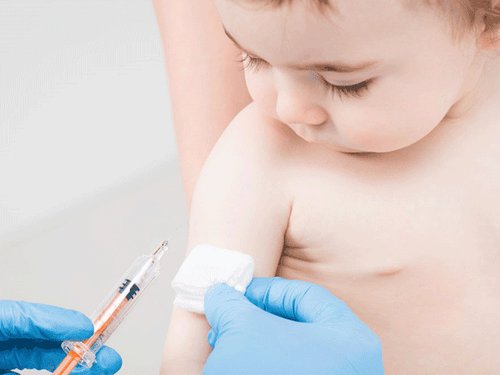
3. How dangerous is mumps in children?
Mumps in general is quite benign, causes few complications, can usually resolve on its own with medical support, and creates permanent immune antibodies.The most common complication of mumps in children is meningitis, but this complication is also usually benign. Other complications such as myocarditis, acute pancreatitis, polyarthritis... are very rare.
There are only genital complications in children with mumps, present in both boys and girls. In boys at puberty, about 20% of cases have orchitis, the rate of testicular atrophy is about 5% of cases. This complication can completely lead to infertility later if not treated promptly.
In girls with mumps, about 7% have ovarian inflammation, very rarely infertile, so it can be said to be better than mumps in boys.
If a pregnant woman contracts mumps in the first 3 months of pregnancy, the fetus may be born with malformations or stillbirth, miscarriage. Infection in the last 3 months of pregnancy, the rate of stillbirth and premature delivery is quite high.
Parents can prevent mumps in young children by injecting mumps vaccine, which is a live attenuated virus vaccine, safe, produces high antibodies, does not cause fever, protects up to 75-95% of cases. exposure for at least 17 years.
Please dial HOTLINE for more information or register for an appointment HERE. Download MyVinmec app to make appointments faster and to manage your bookings easily.







